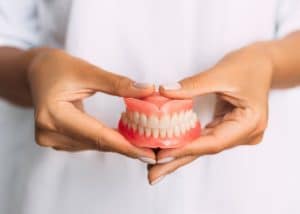 One of the most common signs that something is wrong with your oral health is the development of a toothache. In fact, toothaches and sensitivity are so common that many people take them as the only warning sign that matters. However, there are many oral health concerns, including gum disease, that don’t produce aching in your teeth, at least not until their late stages. Fortunately, there are other signs to warn you of gum disease development, and being able to recognize them will help you better protect the long-term health and integrity of your smile.
One of the most common signs that something is wrong with your oral health is the development of a toothache. In fact, toothaches and sensitivity are so common that many people take them as the only warning sign that matters. However, there are many oral health concerns, including gum disease, that don’t produce aching in your teeth, at least not until their late stages. Fortunately, there are other signs to warn you of gum disease development, and being able to recognize them will help you better protect the long-term health and integrity of your smile.
Excessive tartar buildup along your gum line
Plaque and tartar are common dental terms, but their significance is often underestimated. Plaque is a biofilm that oral bacteria create to cling to your teeth surfaces, allowing them to metabolize the nutrients you eat and drink by interacting with them before you can digest them. This metabolization is the source of the trouble oral bacteria cause, as the substances they produce can directly erode your teeth or gum tissues. In the case of gum disease, plaque and tartar (calcified plaque) will form along your gum line, and the bacteria will focus on working their way underneath your gums. Once they do, they can lead to the infection known as gingivitis that sparks the beginnings of gum disease.
The presence of halitosis (chronic bad breath)
You have several hundred different kinds of bacteria living in your mouth, and fortunately, most of them are benign. Some are even necessary for maintaining your mouth’s healthy ecosystem. However, some are harmful, and not just the ones that cause gum disease. Others produce substances that are noticeably odorous, and the more they produce, the worse your breath will get. Halitosis, or chronic bad breath, can indicate a number of different things, but every case shares the fact that the bad breath won’t go away. If you have it, and it’s accompanied by any changes in your gum tissues, then there’s a good chance you have gum disease and should have it addressed as soon as possible.
Changes and/or bleeding in your gum tissues
The changes that occur in your gums when gum disease develops may not be glaringly obvious at first, but in most cases, you can notice them if you’re diligent. For instance, as gingivitis sets in, you’ll be able to see your gums becoming more red and angry-looking in their appearance. You might also see discoloration in certain areas of your gums, and as you brush and floss your teeth, your gums could start to bleed slightly. Keeping an eye on the state of your gum tissues will significantly increase your chances of spotting the warning signs early and seeking treatment before the disease can cause any significant harm to your gums and oral tissues.
Protect your smile from gum disease development
Given enough time, gum disease can become the greatest threat to your oral health and smile. If you notice signs that it’s developing, or that you might be at risk for it, then schedule an appointment by calling Allen & Neumann Family Dentistry in Pella, IA, today at (641) 628-1121.



